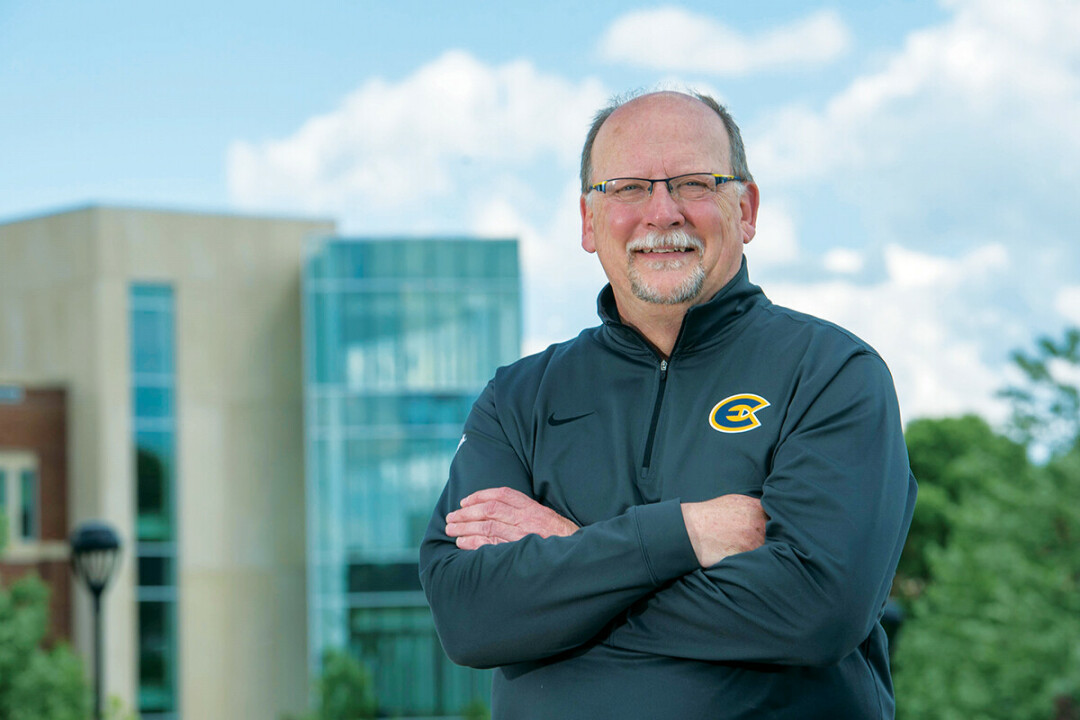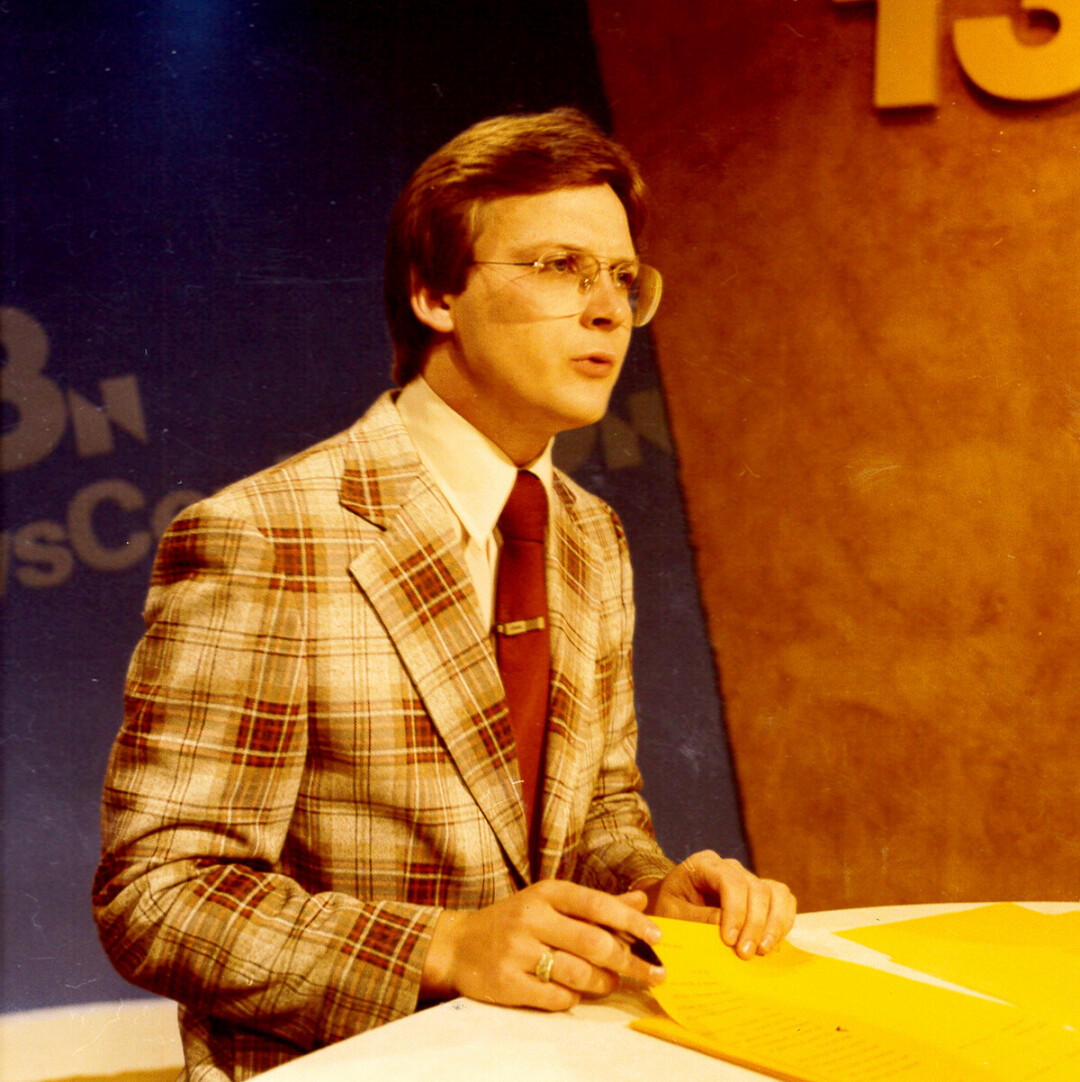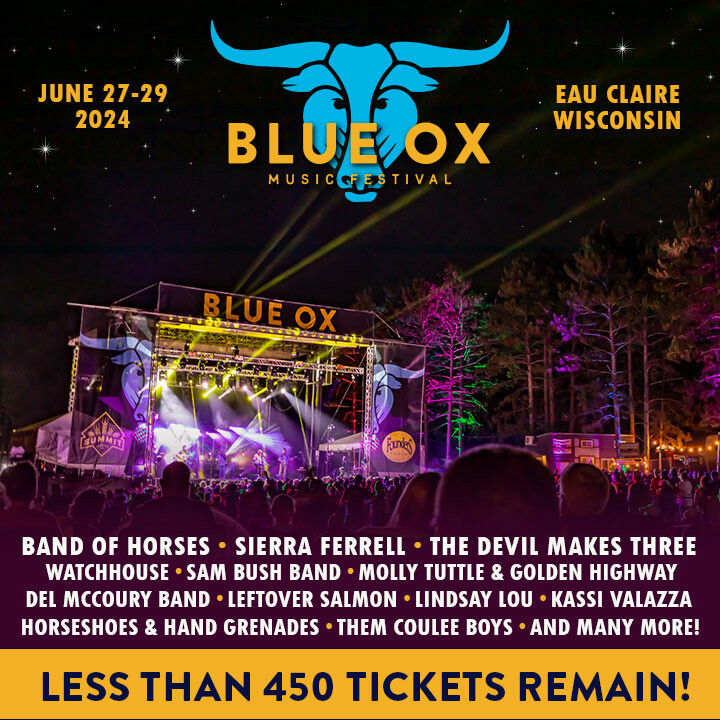UWEC’s Rindo Hangs Up His Hats
former TV newsman served as university's public voice, led push for new facilities

During a nearly two-decade career at UW-Eau Claire and more than 20 years before that as a TV newsman, Mike Rindo has spent plenty of time in the limelight. From the anchor desks of WEAU 13 News and WQOW News 18 to the corridors of the university, the UW System, and the state Capitol, Rindo has both shared and shaped the news for the Chippewa Valley.
Rindo officially retired July 6 as UWEC’s assistant chancellor for facilities and university relations. A 1978 Blugold grad, Rindo left the world of journalism in 2001 to become UWEC’s executive director of communications. Over the years his portfolio grew, encompassing not only telling the university’s story to the public but also overseeing the campus master planning processing and shepherding building projects into reality. Among them were the first new buildings on campus in decades, including Centennial Hall and the new Davies Center. “I never would have dreamed that,” Rindo said of his career turn toward overseeing campus facilities. “It’s been a really wonderful experience.”
Among his career’s capstones was the decade-long push that culminated in the 2018 opening of the Pablo Center at the Confluence, a shared university-community downtown arts center.
As his retirement neared, Volume One asked Rindo about his dual public careers, projects finished and unfinished, and the public-private partnerships that have shaped them.
Volume One: You came to UWEC as a student in 1974 and are retiring 46 years later as one of its top leaders. Briefly, how would you compare the university in 1974 to the university in 2020?
Mike Rindo: It’s hard for me to make a comparison, as the experience one has (as) a student is totally different than what one has as an employee/administrator. The biggest difference is how the campus looks now compared to 1974 – the transformation of Garfield Avenue into a bike/pedestrian mall to take full advantage of the riverfront is a transformational change, as is the campus mall between Schofield Hall and the new Davies Center. Of course, the other new buildings – Centennial Hall and The Suites residence hall have also changed the look and feel of campus, not to mention the functionality.
The motto “Excellence” was at the heart of the university mission in 1974, as it is today. As a student, I always felt – even though there were 10,000-plus students even then – that I received individual attention and instruction from faculty. That, I think, is even more true today. Faculty and staff care deeply about helping students succeed, and I have seen that up close as both a student as a leader of the institution.

People in the Valley first got to know you as a TV newsman. What are your fondest memories of reporting the news?
The people you meet. News is about how issues and events impact people and I have had the privilege of meeting many people from all walks of life – their stories are most memorable. I also had the opportunity to work with a lot of talented and dedicated people who, every day, did their best to get the story right. We took that responsibility seriously and knew that we had an obligation to the public to report the news accurately and fairly.
What were the challenges in moving from being a journalist to working for the university?
The biggest challenge was understanding the complexities of how a university operates and the many statutes and policies that must be followed. UW-Eau Claire is a large institution – a small city within a city – and the learning curve was steep. Moving from television news operations, which by their very nature are nimble and responsive, to a large, highly regulated organization that has a multi-layered consultation and decision-making process, required a fundamental change in attitude and approach. Asking questions as a journalist is very different than answering questions asked by a journalist. It took a while for me to get used to being the one who had to provide answers in a clear and concise manner.
During your tenure at the university, you’ve been involved in many projects – including the Pablo Center at the Confluence and the Sonnentag Centre – that been partnerships between the university and the private sector. How do you see such public-private relationships playing out in the coming years?
I think such partnerships will continue to be essential. The Sonnentag Centre has the potential to be another “game changer” for the community and region – and the UW-Eau Claire partnership with Mayo Clinic for research facilities within the new science and health sciences building is another great example. Public-private partnerships aren’t always the answer, but when done under the right circumstances for the right reasons can result in projects that have greater impact than they would if undertaken individually.

Speaking of the Pablo Center, you helped bring the idea from its inception to completion. What were the biggest challenge in making that project a reality?
There were many challenges – too many to chronicle in a short answer. Ultimately, the project moved forward because many, many people got behind it and did all they could to make it a reality. Working with the private partners – Commonweal Development and Market & Johnson, and Blugold Real Estate – and the public partners – the university, city, county, and state – was complicated and required patience and persistence. As my great friend and partner Kim Way always said, “Failure was not an option,” and those who worked tirelessly to make it happen always put the project first and viewed whatever challenge that was presented as something that needed to be resolved in the best interests of the project. The determination of Dan Clumpner, Stuart Schaefer, Dan Market, Bob McCoy, and Kim Way to make the project a reality was truly amazing – it would not have happened without them. City and county leadership, especially Kerry Kincaid and Gregg Moore, Board of Regents leadership, John Behling and Ed Manydeeds, and our state legislative delegation, Terry Moulton, Kathy Bernier, Warren Petryk, Dana Wachs, and Kathleen Vinehout, all were instrumental in its success.
What has been your proudest accomplishment at UWEC?
Helping to build more collaborative relationships between the university and the community. Chancellor Jim Schmidt talks a lot about being stronger together and the importance of interdependency – and I have done my best to embrace those principles. Partnerships, done correctly, are very powerful. There is a saying “change happens at the speed of trust,” and my proudest accomplishment is that I was able to help facilitate the building of trust that has resulted in positive change for the campus and community.




















